QuestionQUESTION: My female rat passed away this morning of a Zymbal Gland tumor. I'm trying to find out if their are any studies being done that she could help benefit with. I'm also trying to find out how the body is preserved until the need for it comes?
ANSWER:
You can check with your vet about that, but I can pretty much tell you that, sadly, rats are the last animal on the totum pole that the Veterinary world of medicine is realy concerned with.
Uncontrolled growth of abnormal tissues tend to occur at any age, but with rats and tumors of the zymbals gland tends to occur as they age, between a year and a half and two years old.
Sometimes this may go unnoticed because these clincal changes may be hidden due to the fact they are growing inside the ear canal. Eventually they start to reach the surface, eating its way through the skin on the side of the rats face. It may present itself as an ulceration or it may just be a mass. The problem is, Vets just do not know enough about rats and are not very aware of how common cancer of the zymbals gland is. They see a mass and start to excise it, causing so much more damage than good. These tumors are very aggressive and will eat through the rats face in no time. Agressive tumors like this may even spread to the rats lungs, which I have also seen occur with rats that have this condition. One being my own rat, Bingo, who had it back in the later 90s. He died from respiratory failure but it was due to the spread
Unfortunately, due to the fact that tumors of the zymbals gland are almost always malignant, there is not much to be done other than debridement of necrotic tissue and to keep the rat comfortable using narcotic pain killers A necropsy can be done on the remains of a rat that is kept cold but not frozen for a few days but as far as preservation after that, I have no idea. This would be up to the Vet.
As you know, this is a fatal condition and the goal is promote quality of life and keep the rat out of pain.
Have you been to my website, sandyscrittercity.com?
---------- FOLLOW-UP ----------
QUESTION: Thank you for your quick response. I also trying to find out if this is genetic because Hope was the proud mom of 1 BOY AND 1 GIRL rat.
Answer
Its possible that its genetic, and with rats especially. It is, however, more common in females (between the age of 14 and 24 months) than males, although males DO get them but its just not as common.
There is a way to prevent them in females though, which is good news. As with mammary tumors, pituitary adenomas are also linked to high levels of hormones such as prolatcin and estrogen. These surges usually occur when the female rats estrus cycle comes to an end. Once she no longer ovulates, the hormones pretty much start to dance, triggering the growth of mammary tumors and also pituitary tumors too. Spaying the female when she is young, mainly 3 to 5 months of age, esp to prevent the growth of a mass on the pituitary gland (which is located at the base of the brain) is a good way to lessen her chances of having to go through mammary tumors surgery. Its not a guarantee, however. With both human and animal medicine,nothing is an absolute...thats why it is referred to as a "practice".
I also suggest that a spay should only be done by a very qualified Vet that knows alot about rat surgery. This is a very invasive surgery and to be honest, one of the more dangerous ones when it comes to rats. If you need a vet, please let me know your location and I will give you names of vets that are qualified to treat rats.

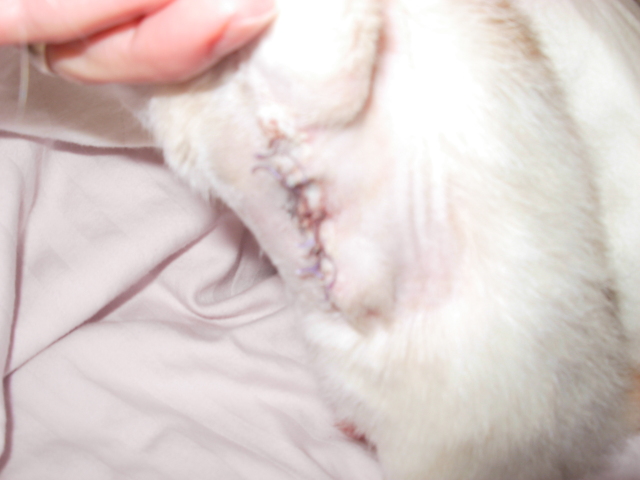 Surgery
QuestionQUESTION: Sandra,
Thank you for all the advice
Surgery
QuestionQUESTION: Sandra,
Thank you for all the advice
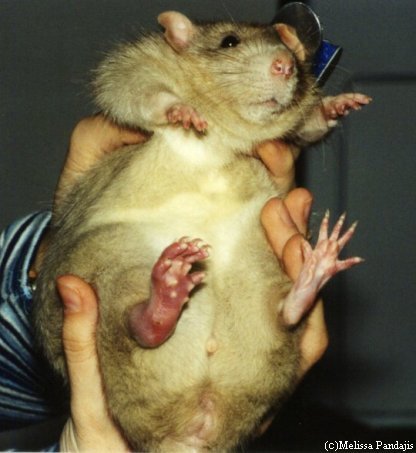 swollen foot
QuestionQUESTION: Hi Sandra.... I think you have helped
swollen foot
QuestionQUESTION: Hi Sandra.... I think you have helped
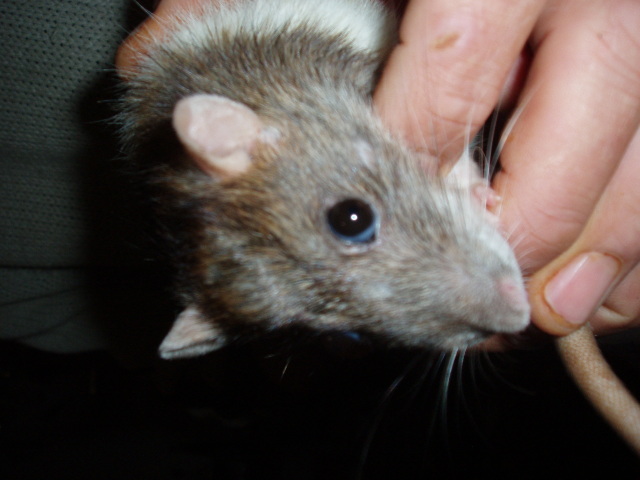 apidly growing lump on the top of Indies head
QuestionIndie
QUESTION: Hi Sandra,
Could you ha
apidly growing lump on the top of Indies head
QuestionIndie
QUESTION: Hi Sandra,
Could you ha
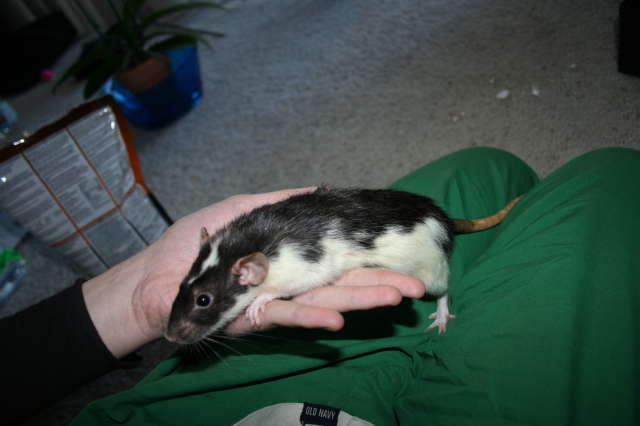 Accidental conception with high white
QuestionBadger
QUESTION: HI, I have several fema
Accidental conception with high white
QuestionBadger
QUESTION: HI, I have several fema
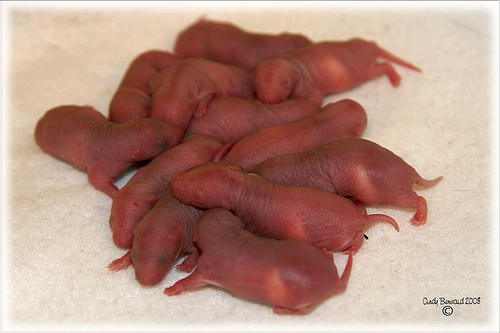 are newborn ratties nursing ?
QuestionQUESTION: **** I have a concern and found you t
are newborn ratties nursing ?
QuestionQUESTION: **** I have a concern and found you t